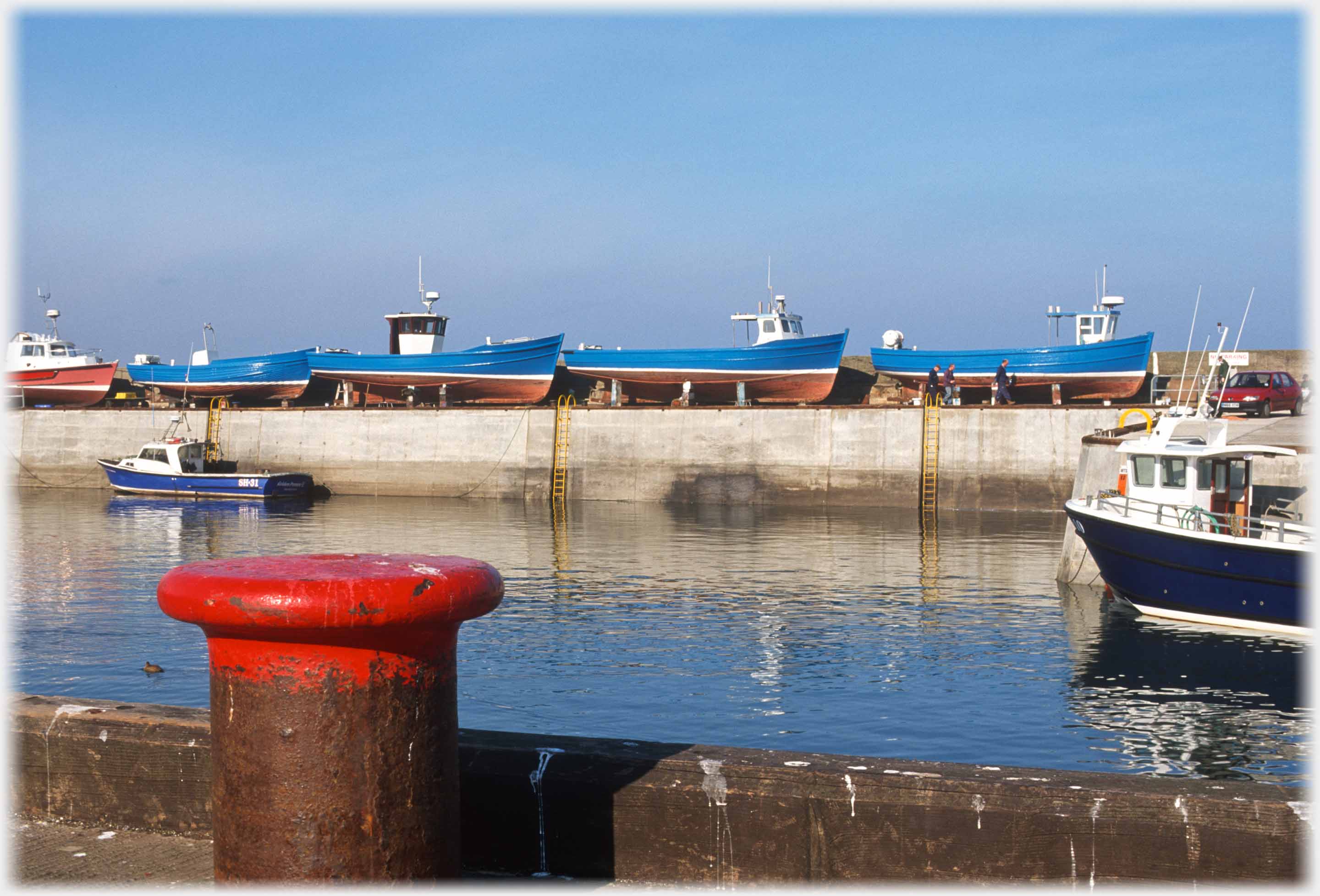 The harbour at Seahouses with pristine boats waiting
The harbour at Seahouses with pristine boats waiting
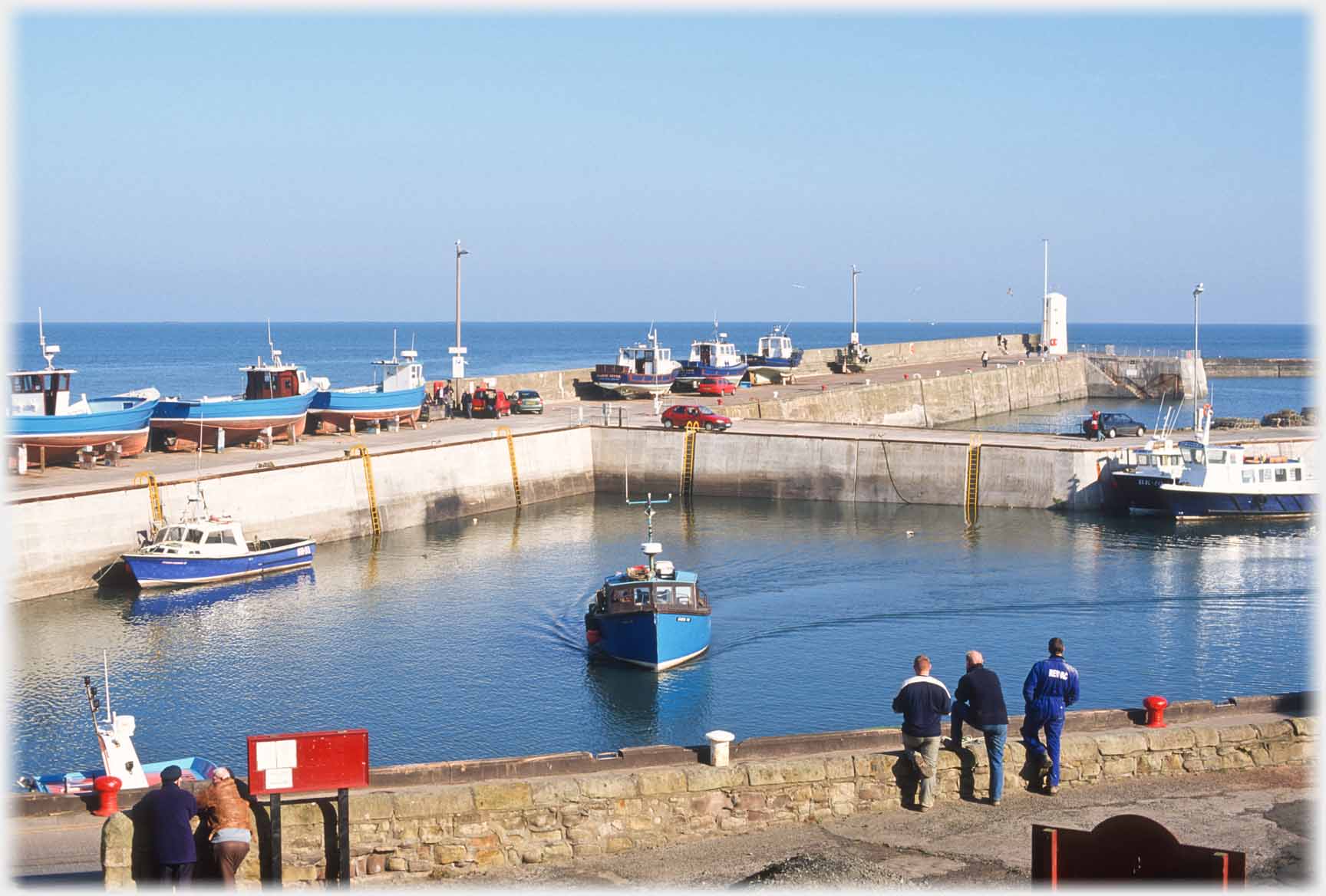 The gentle pastime of 'watching together' at
The gentle pastime of 'watching together' at
Seahouses harbour side Following pages with photographs of the west coast of Scotland, this page crosses Britain to the Farne Islands, off the Northumbrian coast, in the north of England. Boats to these islands, which is a National Trust Reserve, leave from the harbour at Seahouses, the first pictures of this page have photographs of that harbour and those boats - some of which were out of the water receiving their annual painting ready for the coming season. The rest of the page offers general shots of the large colony of seabirds which inhabit these islands. There are also photos of particular birds; among these the puffins and Sandwich Terns offer amusement and pugnaciousness respectively.
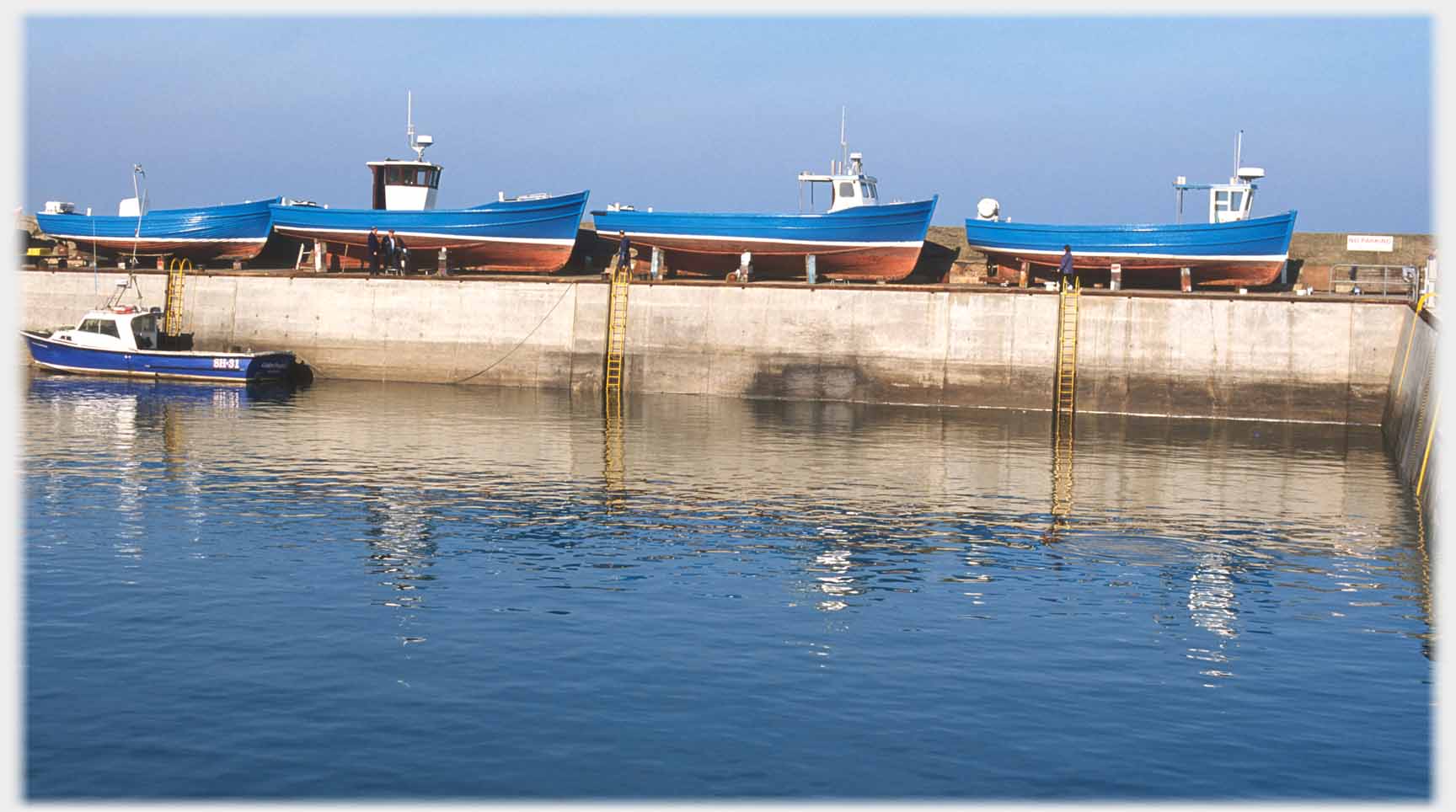 A rather blue crop of the same scene
A rather blue crop of the same scene
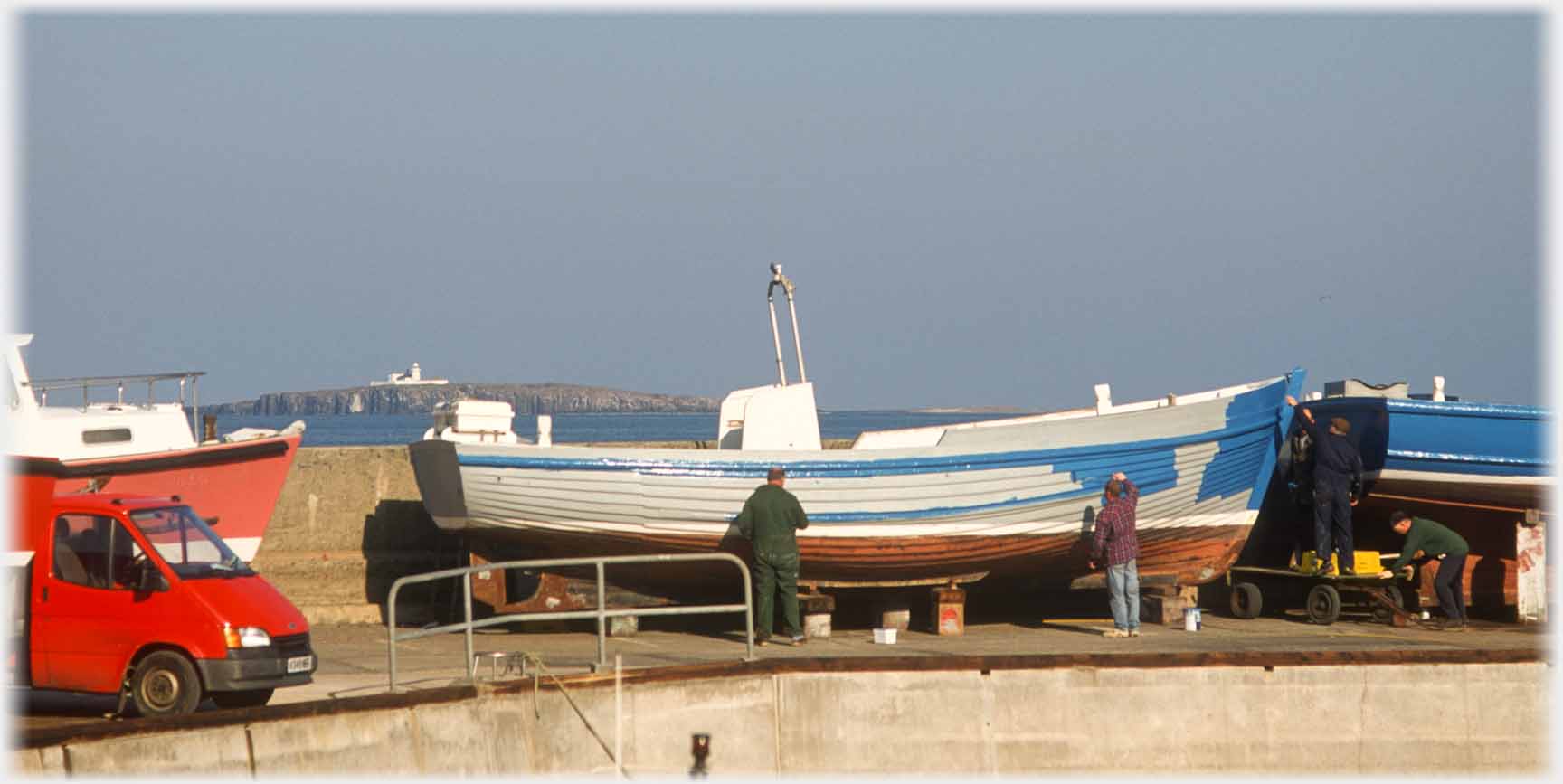 A boat being prepared for the season. Just below where the men are painting...
A boat being prepared for the season. Just below where the men are painting...
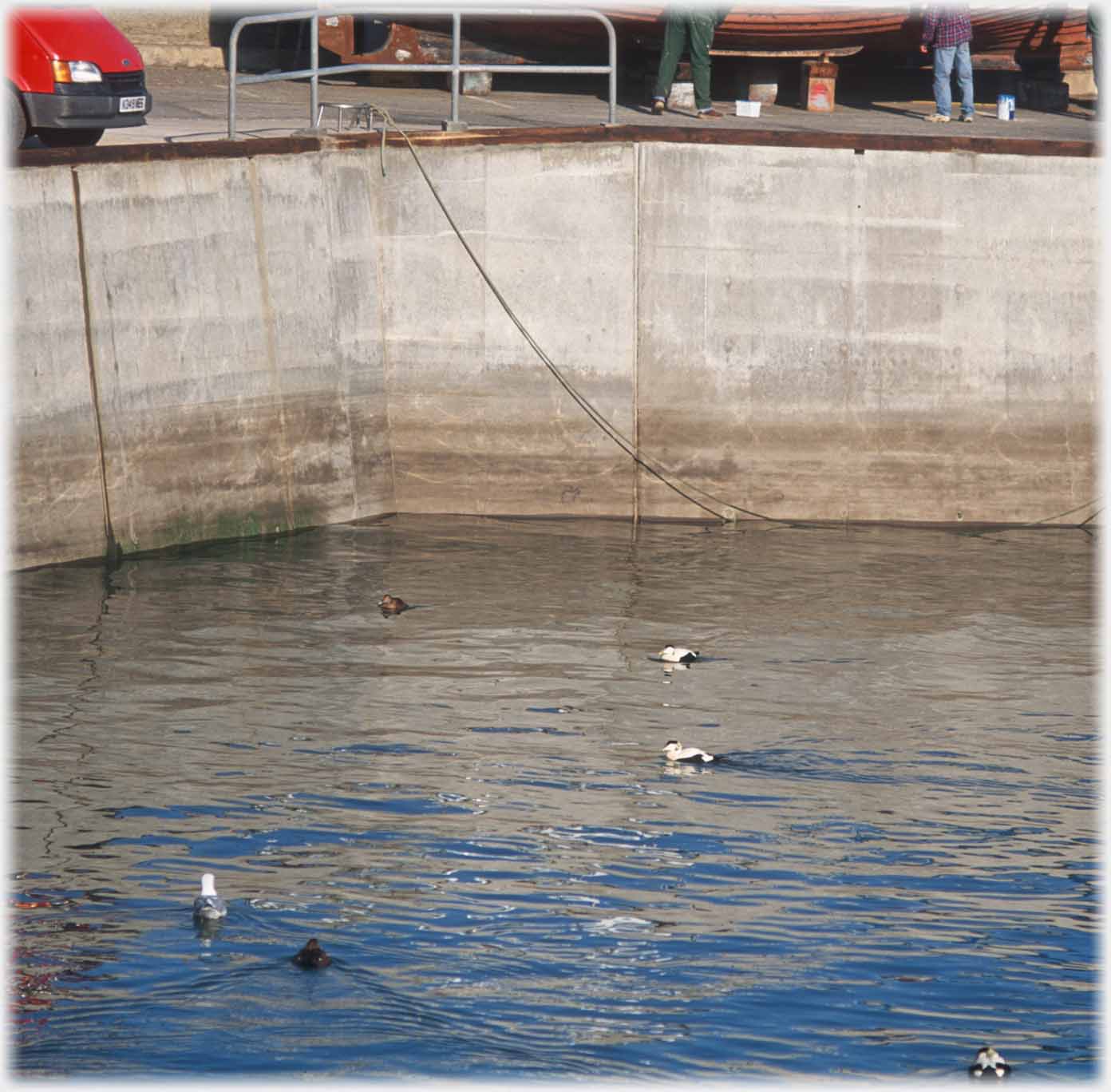 ...Eider ducks swim happily, barely feet away
...Eider ducks swim happily, barely feet away
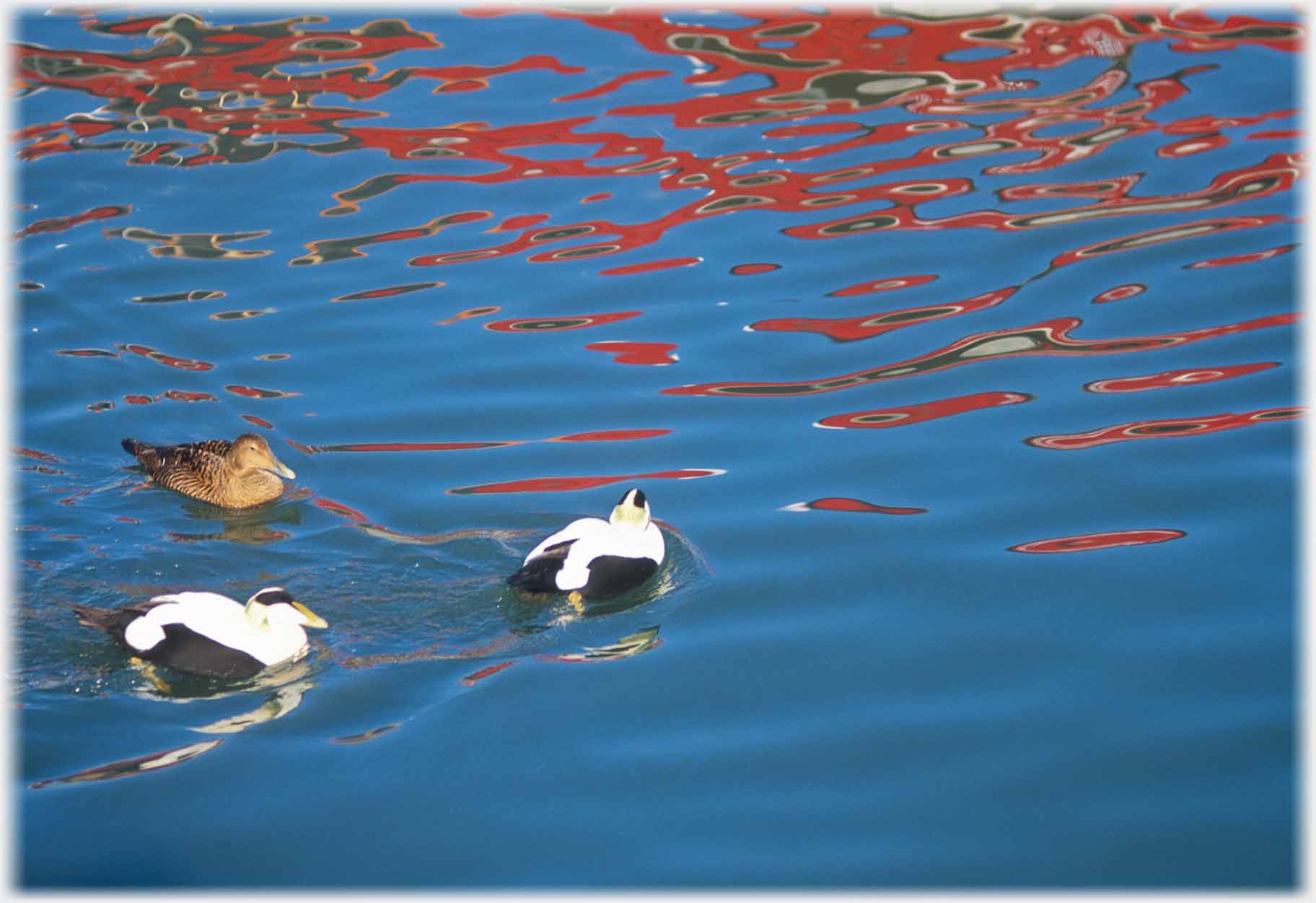 However, the high contrast of black and white plumage...
However, the high contrast of black and white plumage...
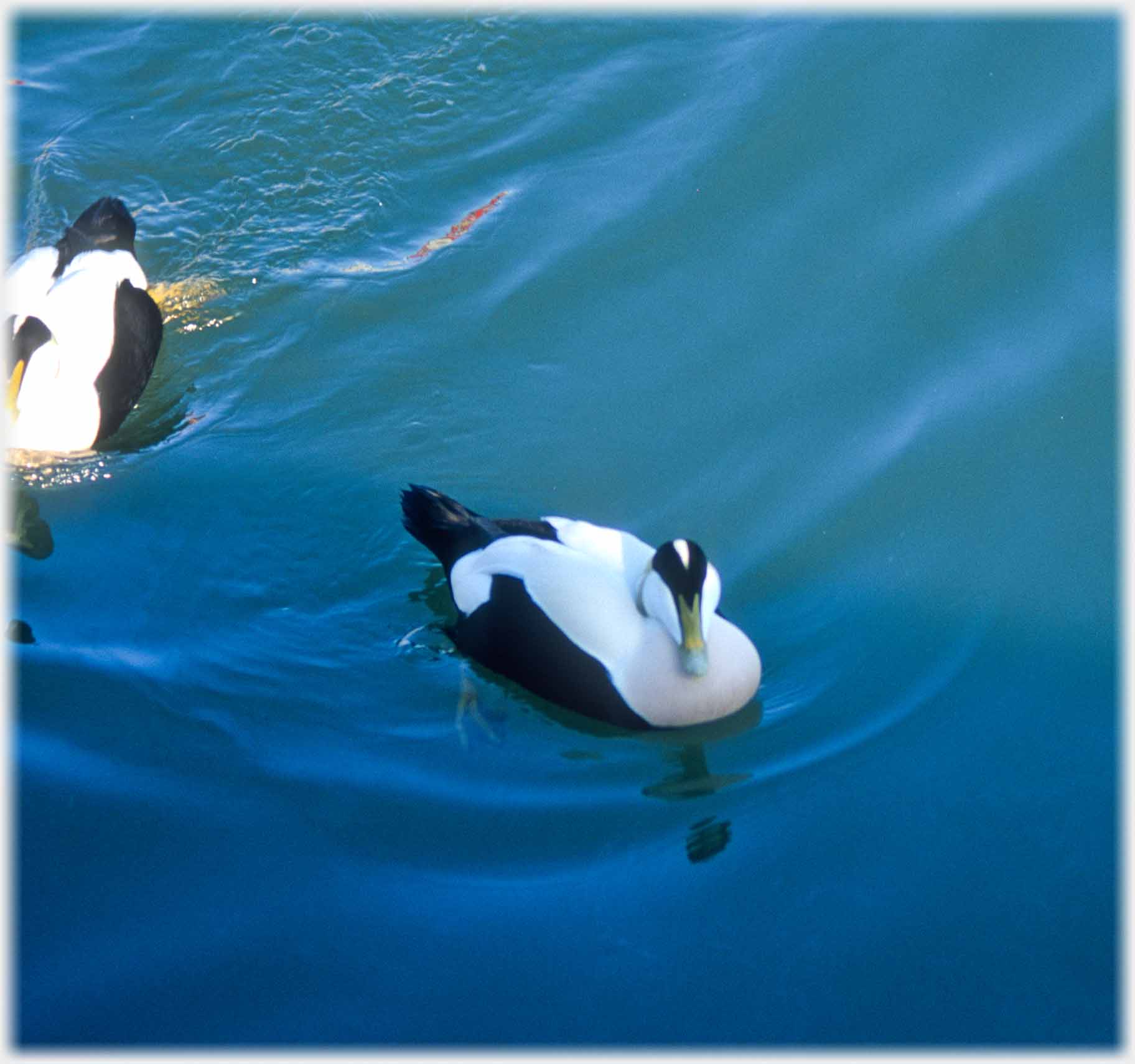 ...makes detail hard to see, but this bird has turned into the shadow showing its delicate plumb coloured breast...
...makes detail hard to see, but this bird has turned into the shadow showing its delicate plumb coloured breast...
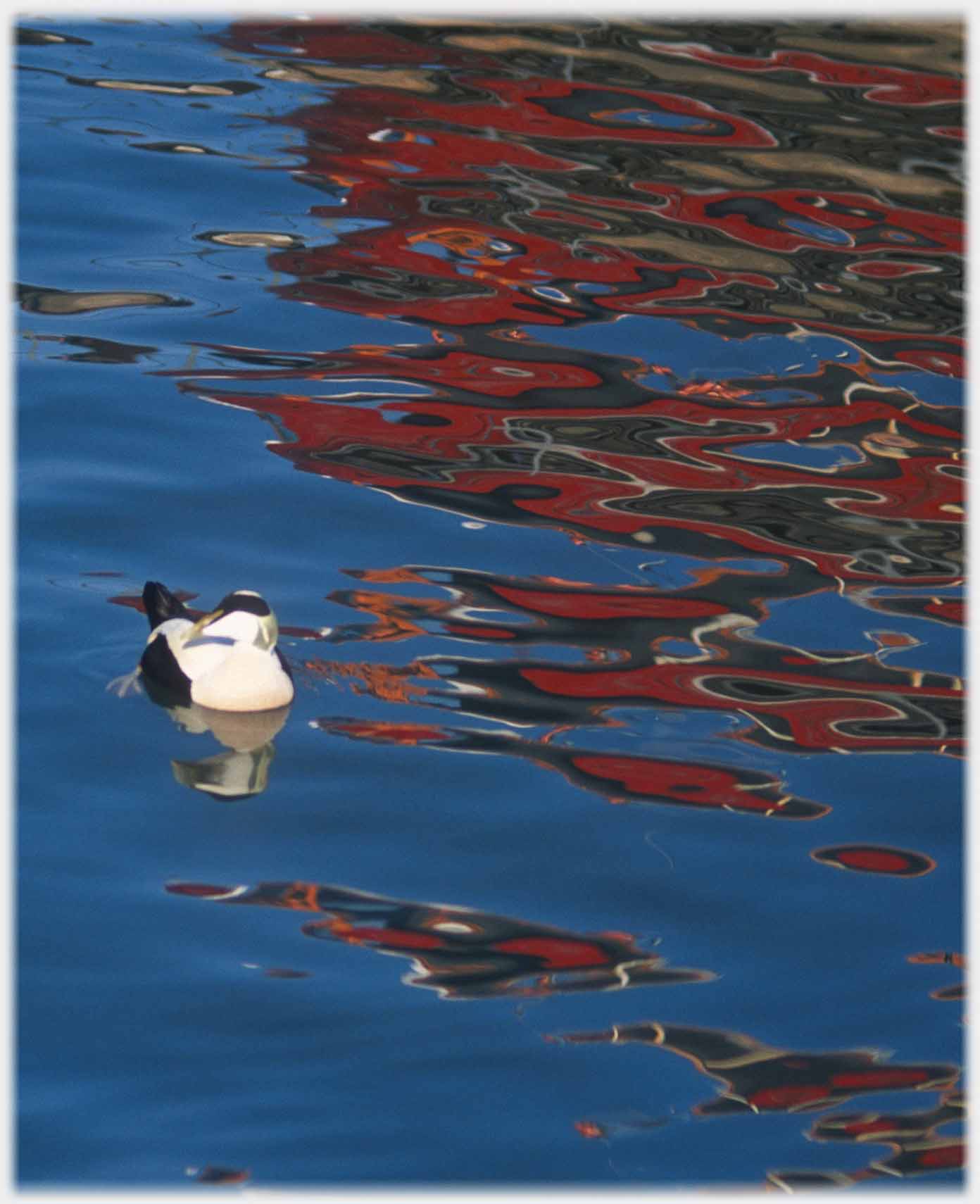 ...and another bird turns its head to show
...and another bird turns its head to show
the neck markings
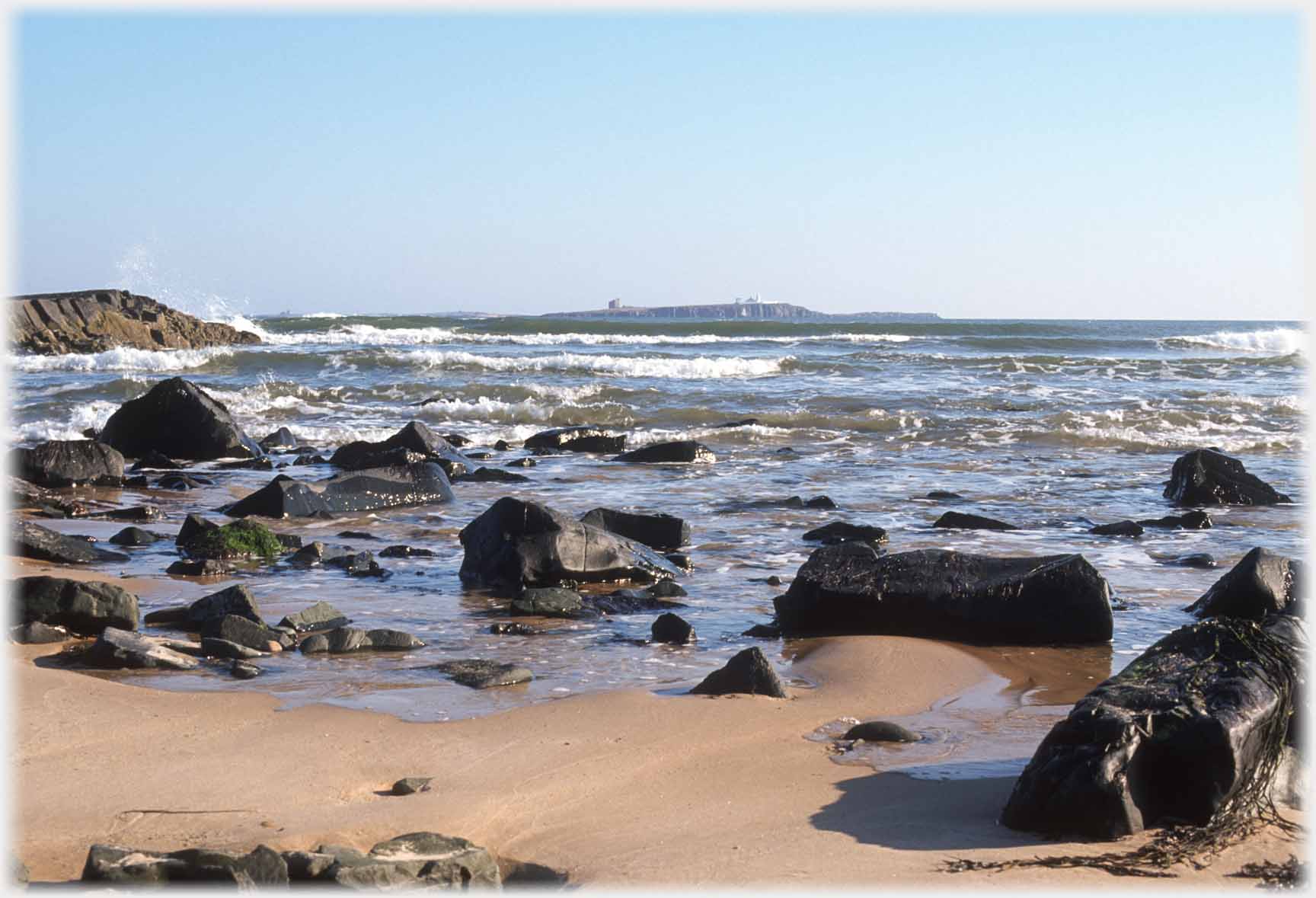 The Farne Islands lie a short distance from the Northumbrian Coast, there is a lighthouse on Inner Farne, (dating from 1811) seen here above the Islestone Rocks
The Farne Islands lie a short distance from the Northumbrian Coast, there is a lighthouse on Inner Farne, (dating from 1811) seen here above the Islestone Rocks
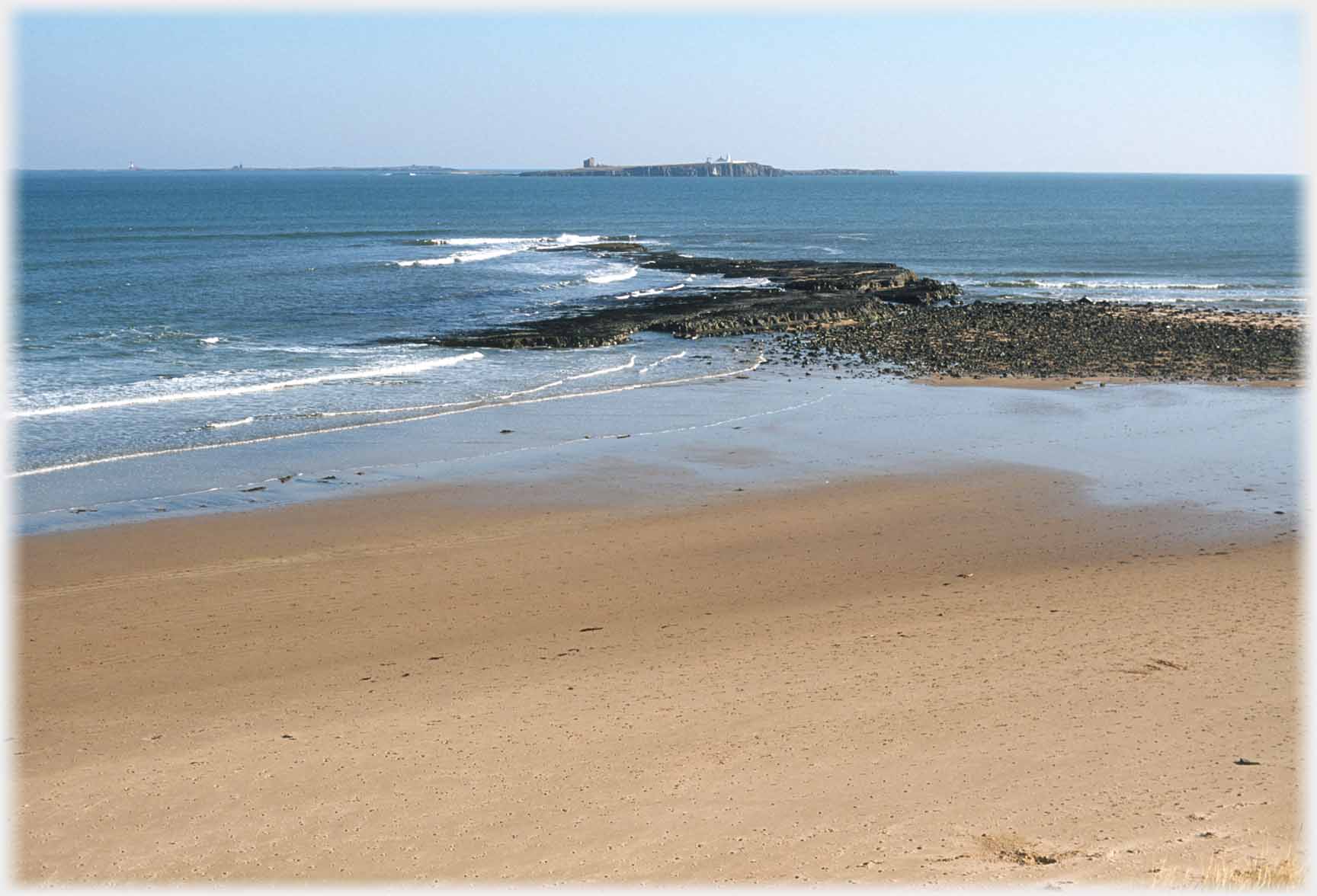 Three miles further out, and just visible to the left above, is the Farne's second lighthouse (completed 1826) situated on Longstone, the furthest out of the islands
Three miles further out, and just visible to the left above, is the Farne's second lighthouse (completed 1826) situated on Longstone, the furthest out of the islands
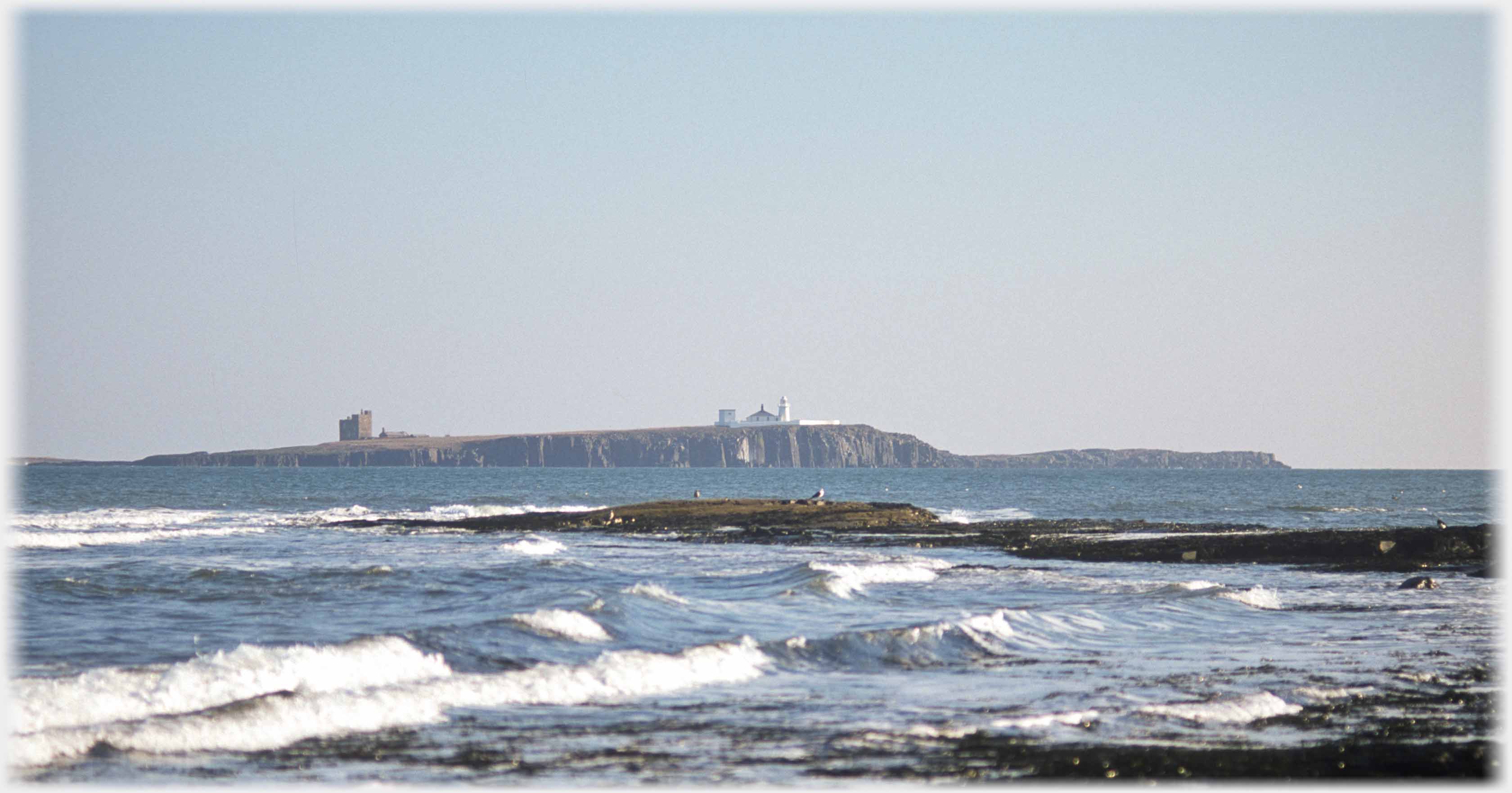 The lighthouse on Inner Farne is only a little over a mile from the mainland, to the left is Prior Castell's Tower which dates from around 1500
The lighthouse on Inner Farne is only a little over a mile from the mainland, to the left is Prior Castell's Tower which dates from around 1500
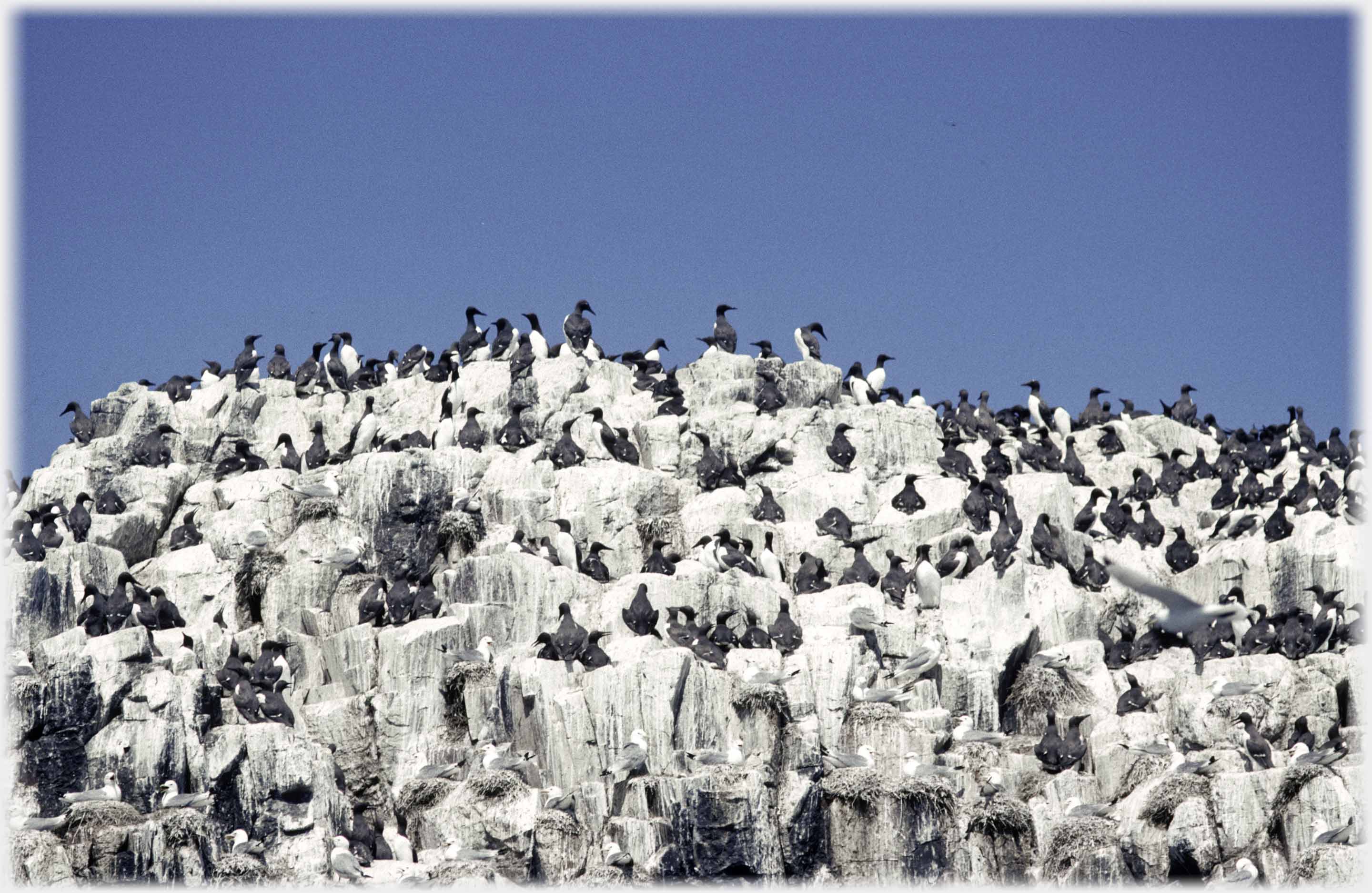 And so over to Inner Farne which has been a centre of ecclesiastical activity since the early middle ages. However, the cliff nesting birds have an edge in terms of longevity on the island
And so over to Inner Farne which has been a centre of ecclesiastical activity since the early middle ages. However, the cliff nesting birds have an edge in terms of longevity on the island
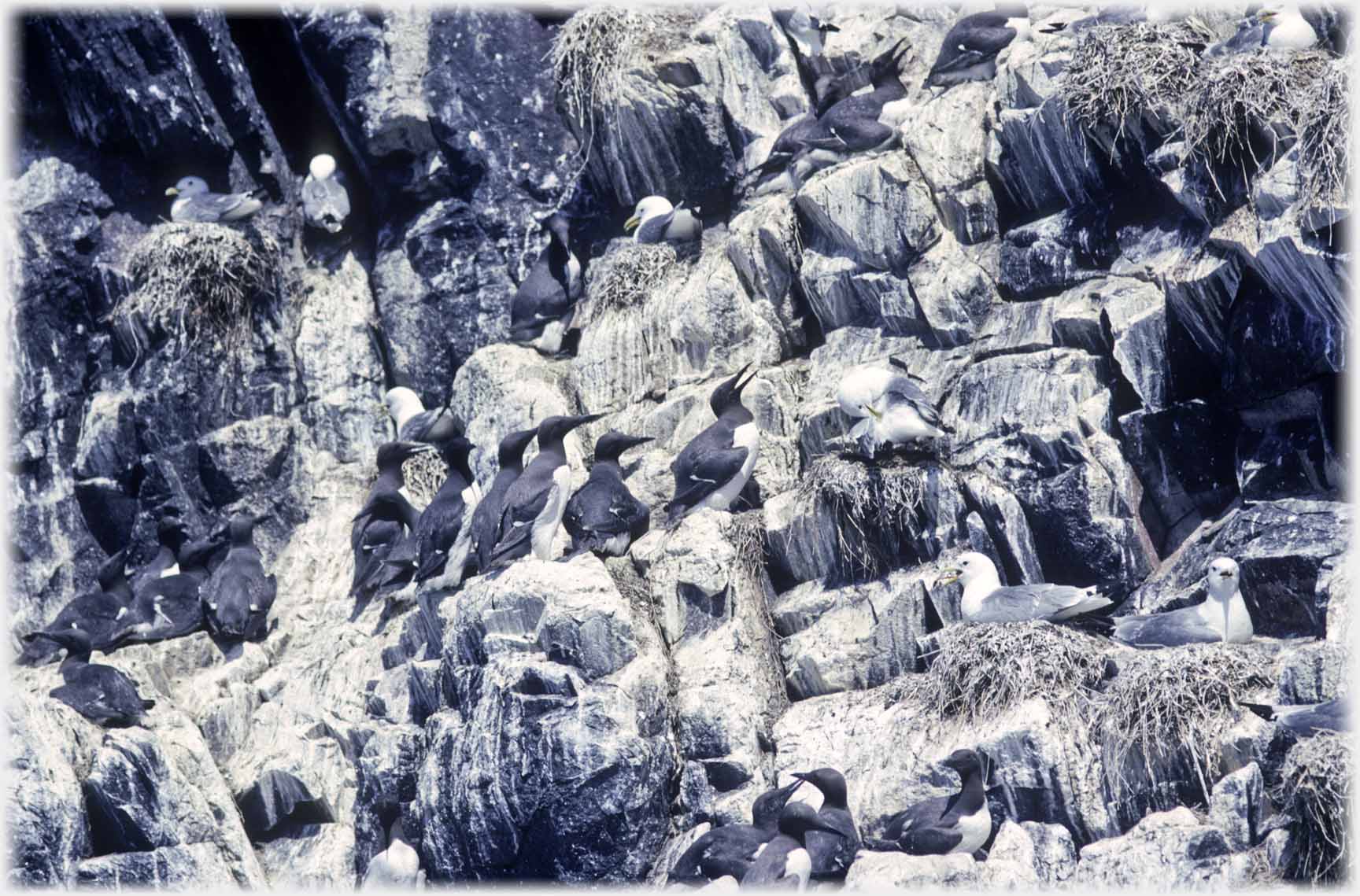 The cliff ledges are made white by their inhabitants...
The cliff ledges are made white by their inhabitants...
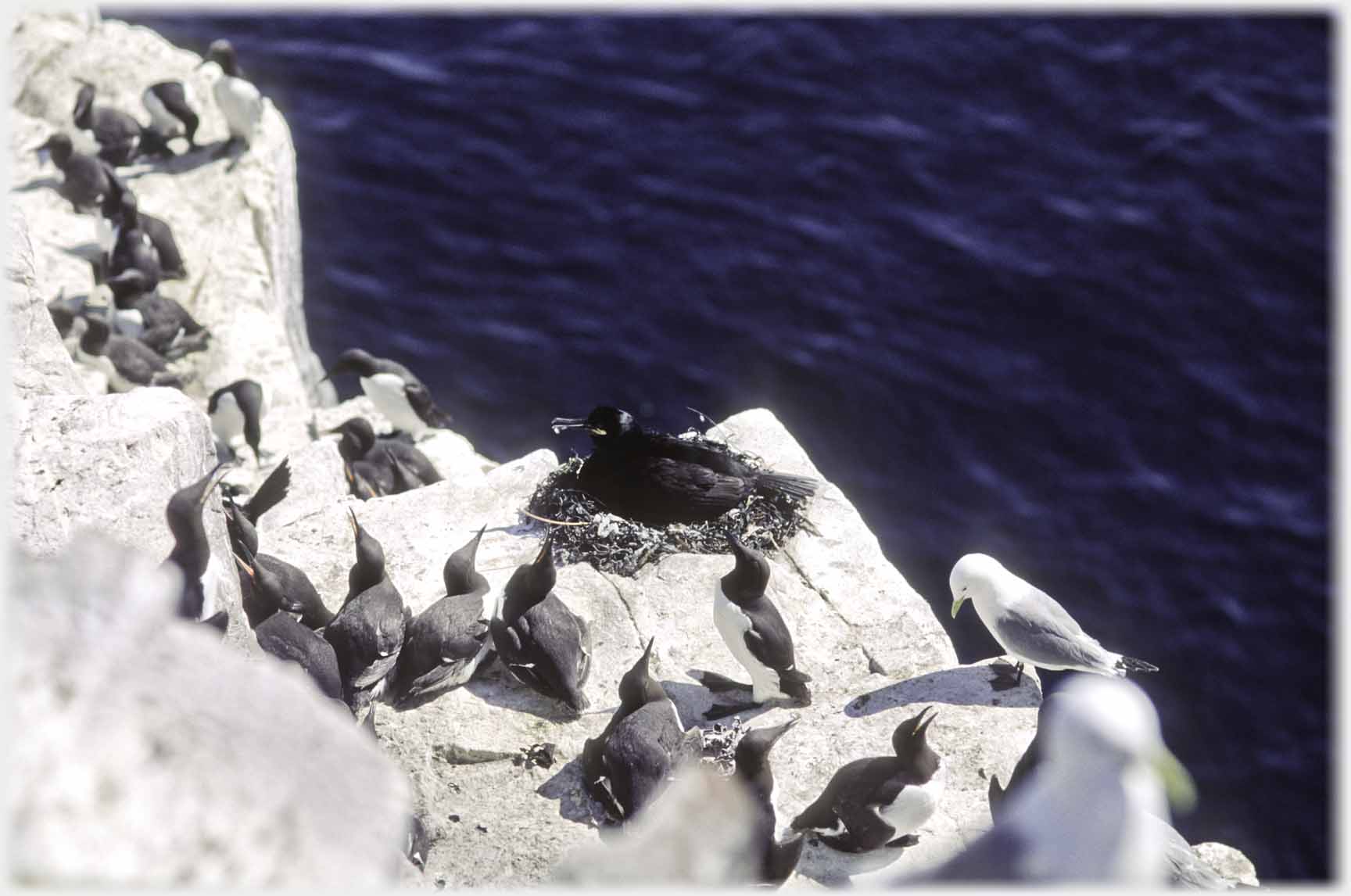 ...guillemots, kittiwakes and shags
...guillemots, kittiwakes and shags
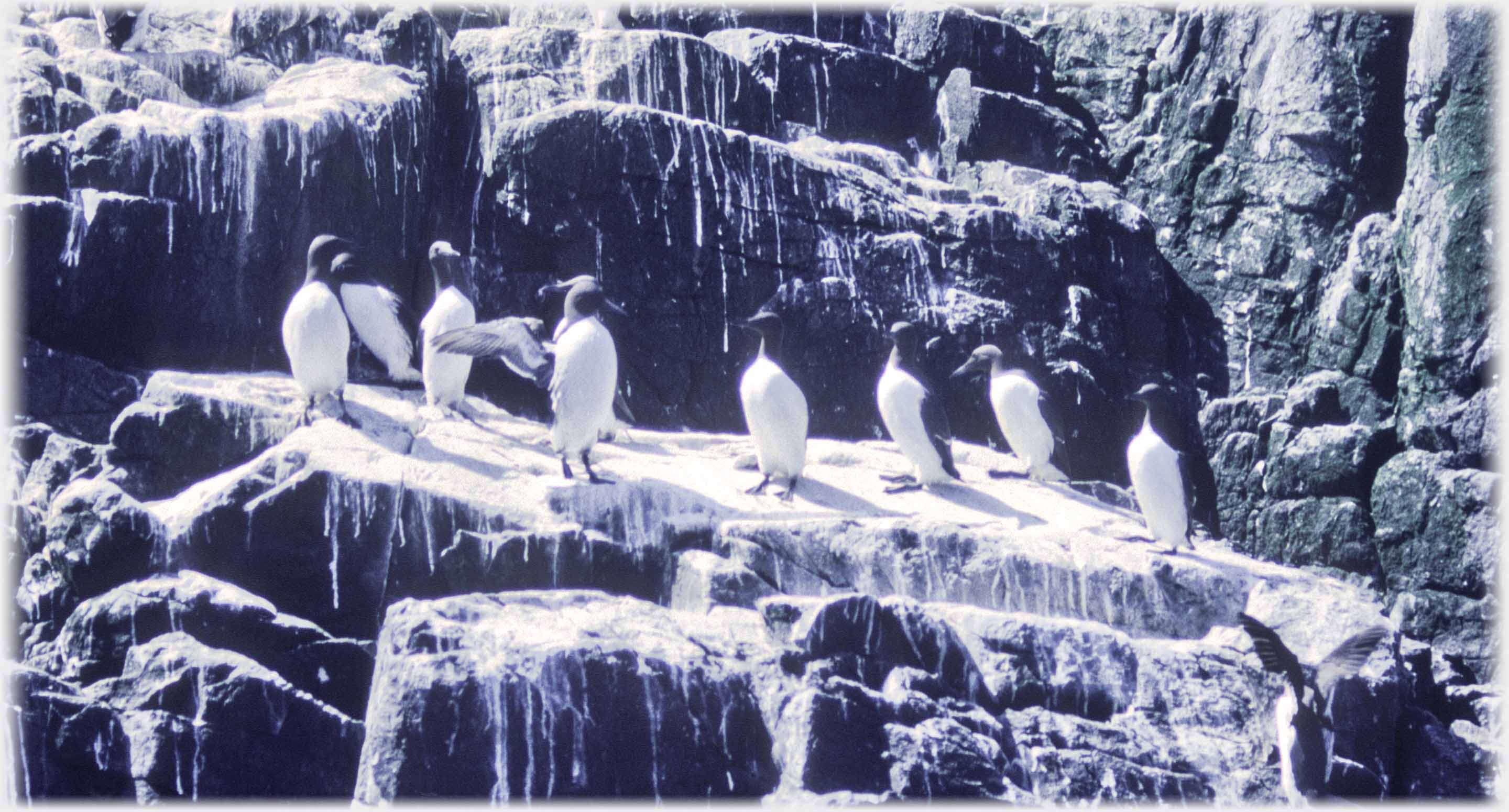 Guillemots on parade
Guillemots on parade
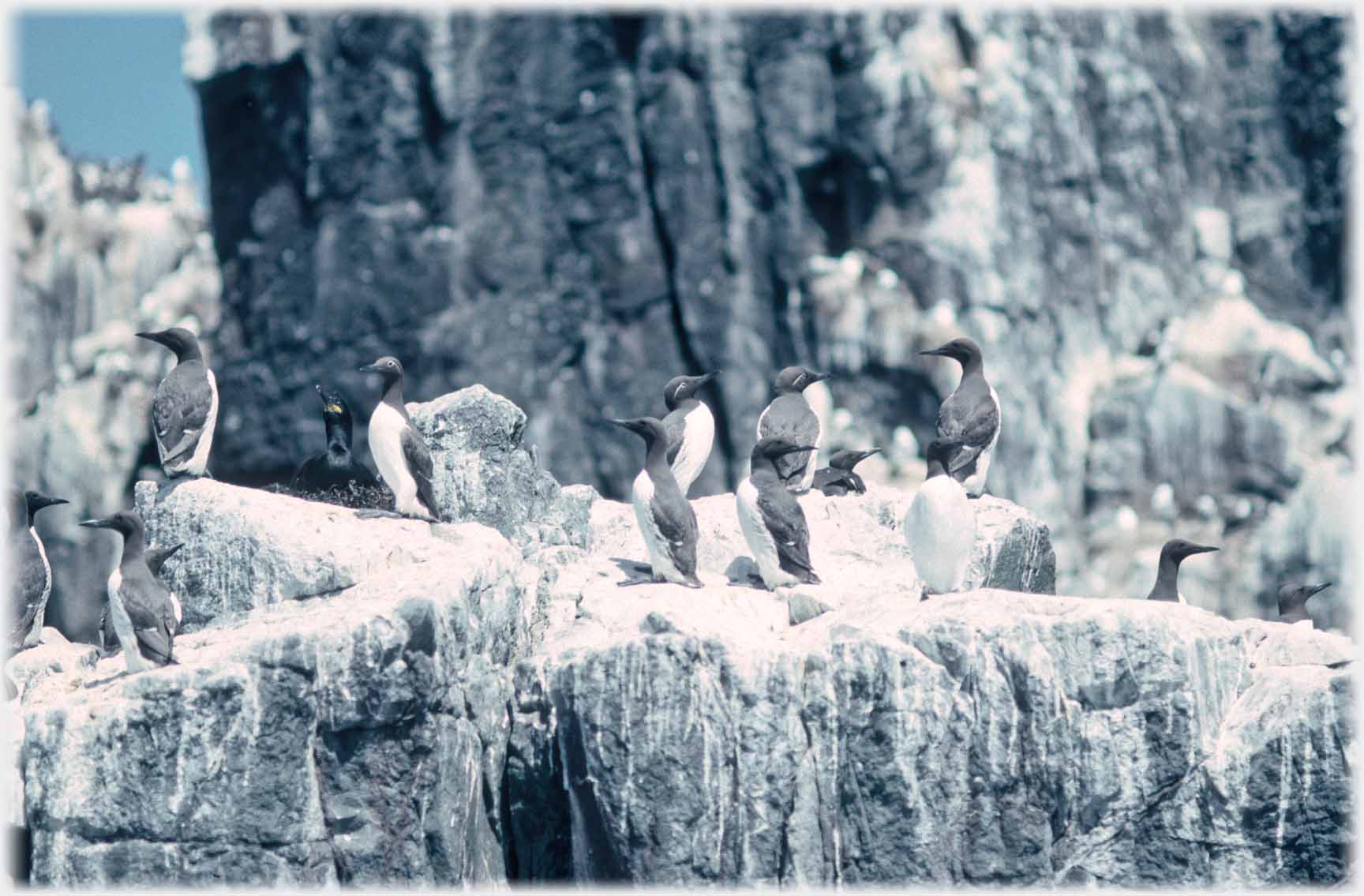 These photos with their drained colour show how hard it is to see these black and white birds against...
These photos with their drained colour show how hard it is to see these black and white birds against...
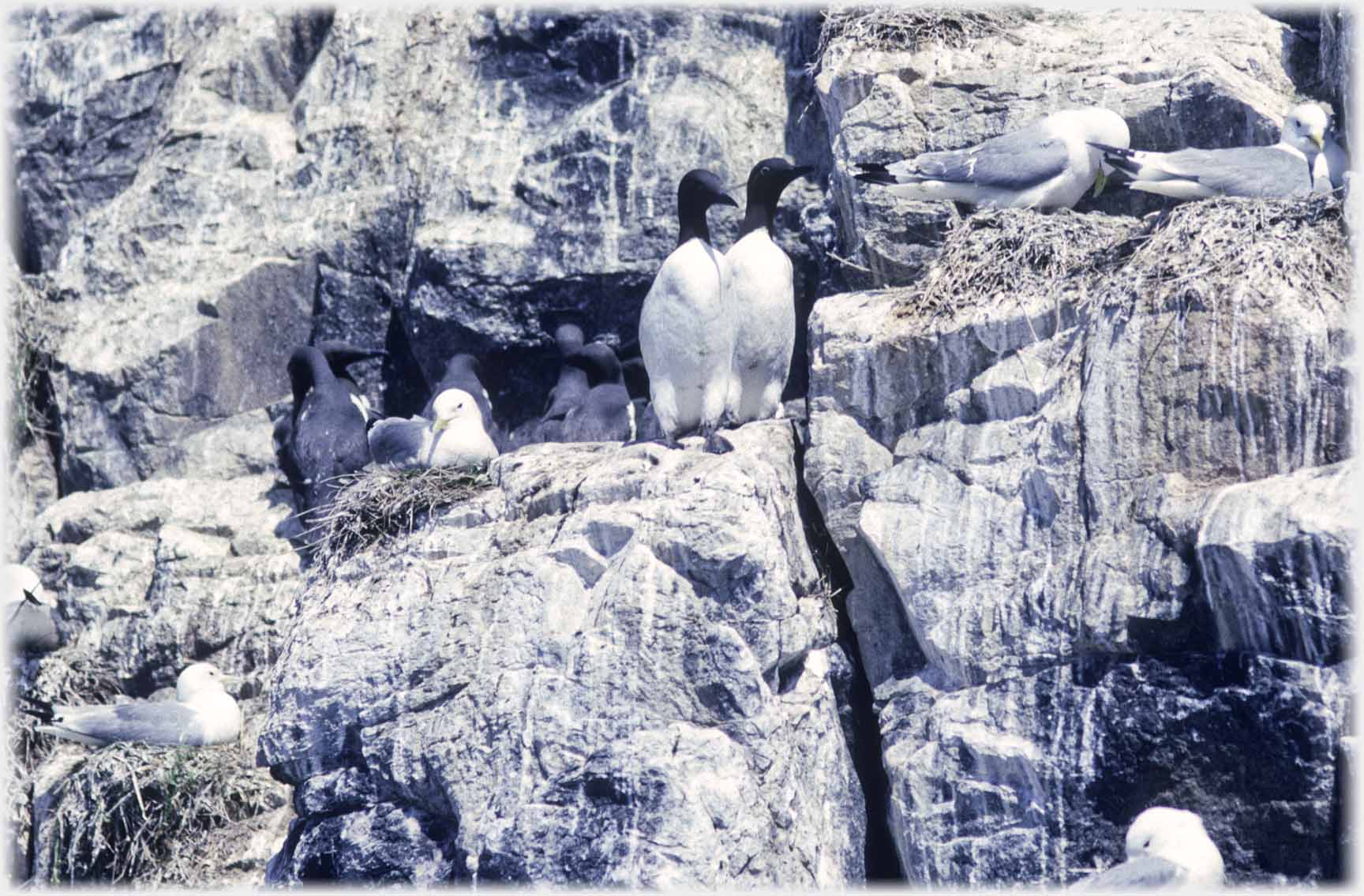 ...the black and white background. Above, kittiwakes add their snow white heads to the monochrome scene
...the black and white background. Above, kittiwakes add their snow white heads to the monochrome scene
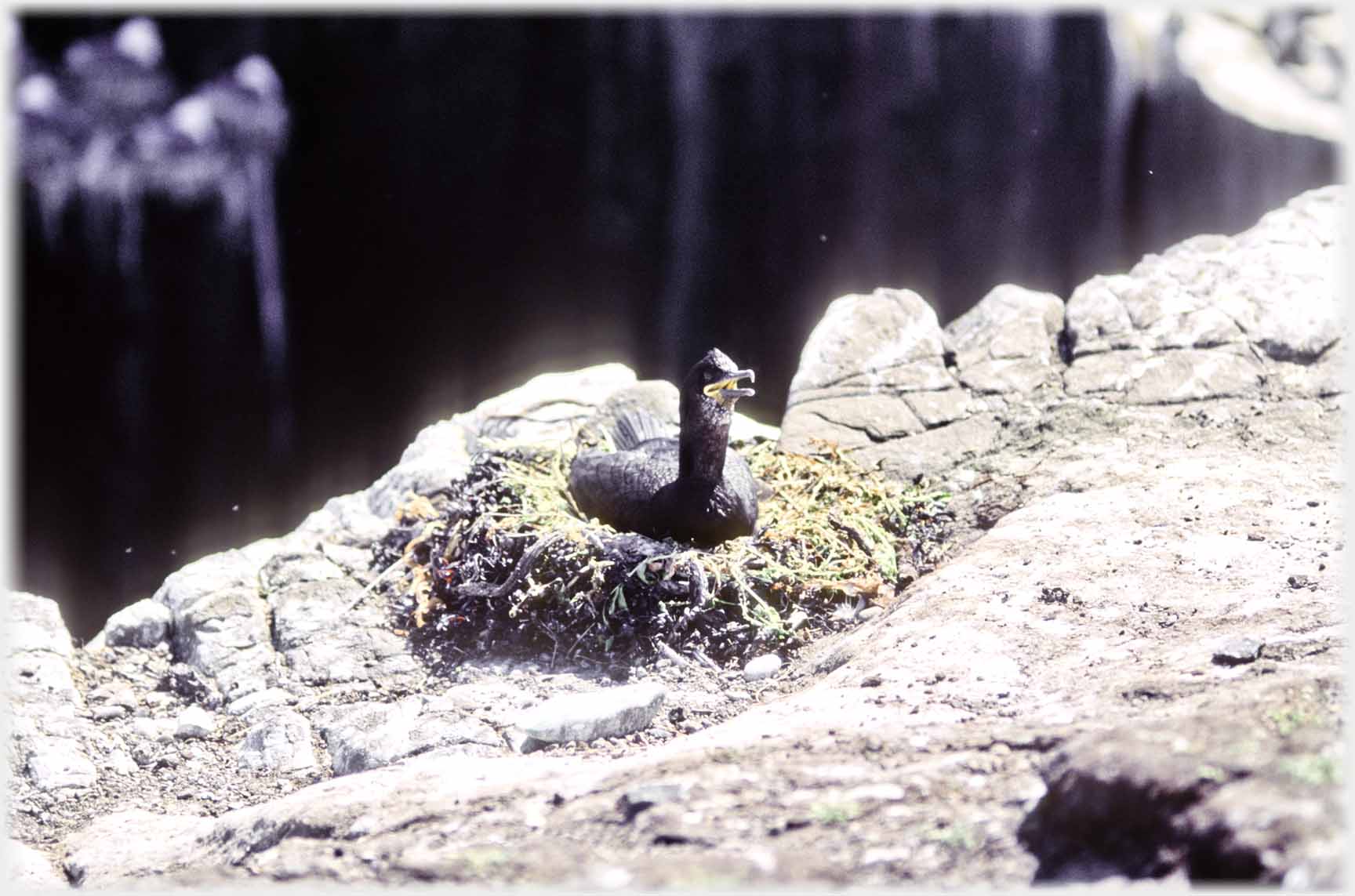 Shags and cormorants are hard to distinguish, often appearing as very similar black outlines.
Shags and cormorants are hard to distinguish, often appearing as very similar black outlines.
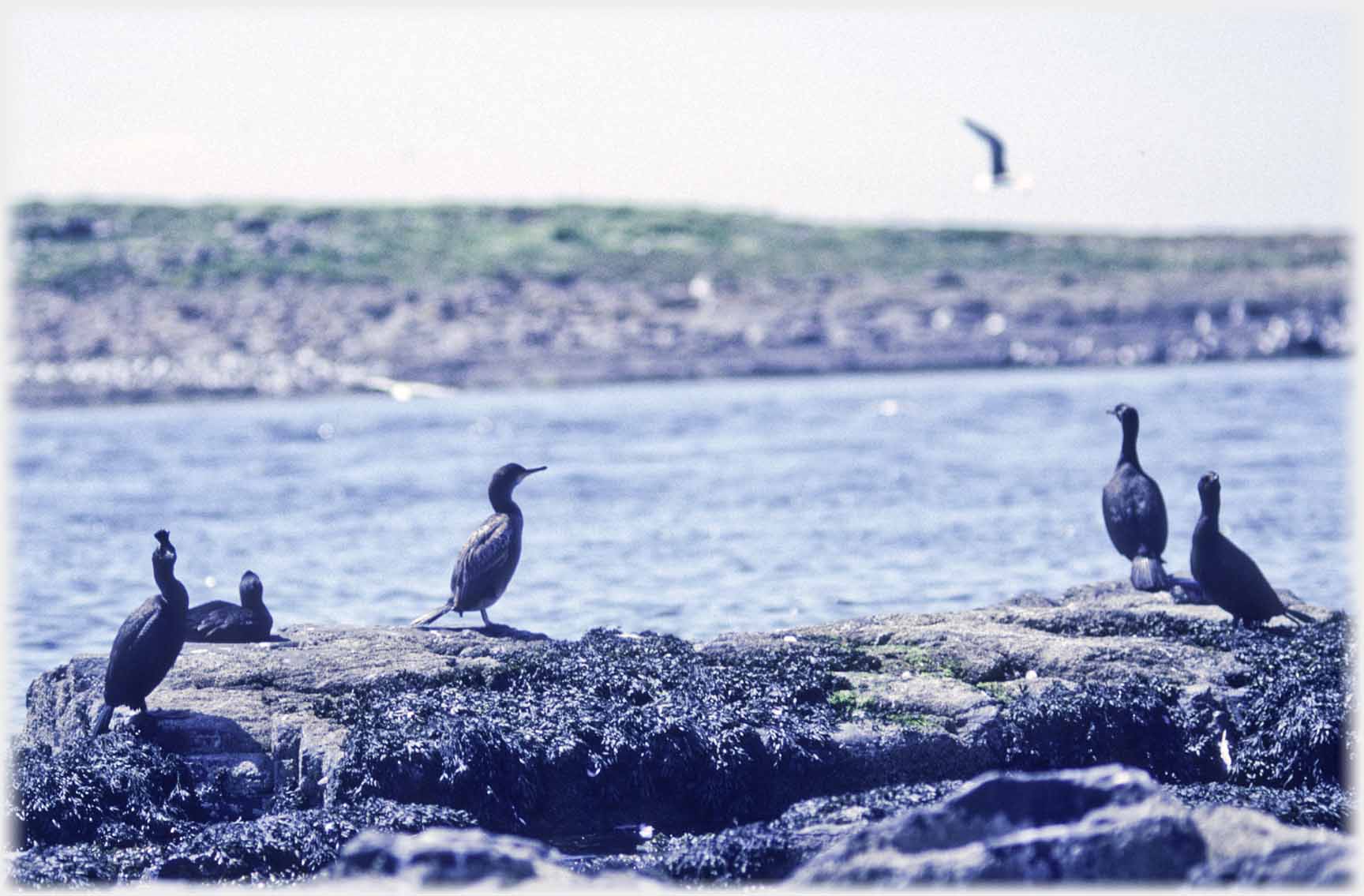 Cormorants have a bare patch behind their bills and are bigger - which rarely is a useful fact!
Cormorants have a bare patch behind their bills and are bigger - which rarely is a useful fact!
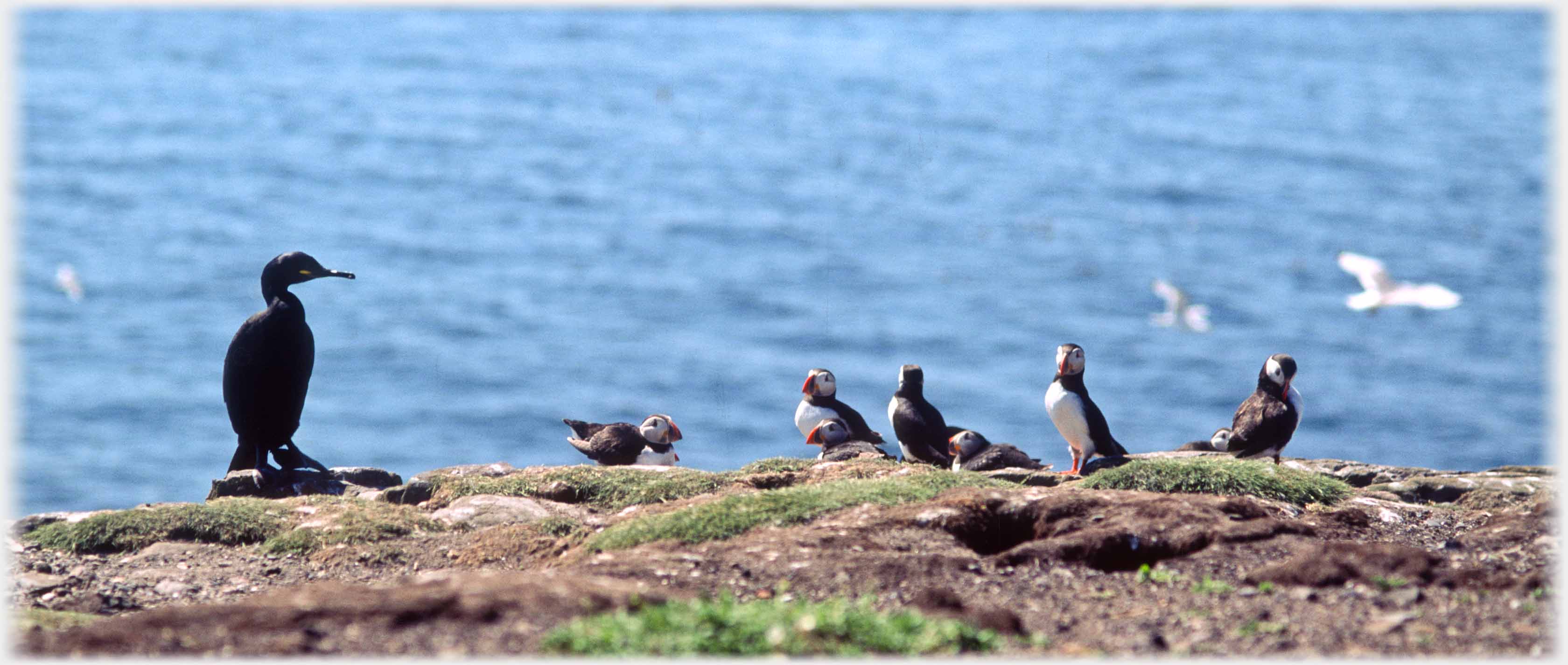 A (probable) cormorant with a puffin audience
A (probable) cormorant with a puffin audience
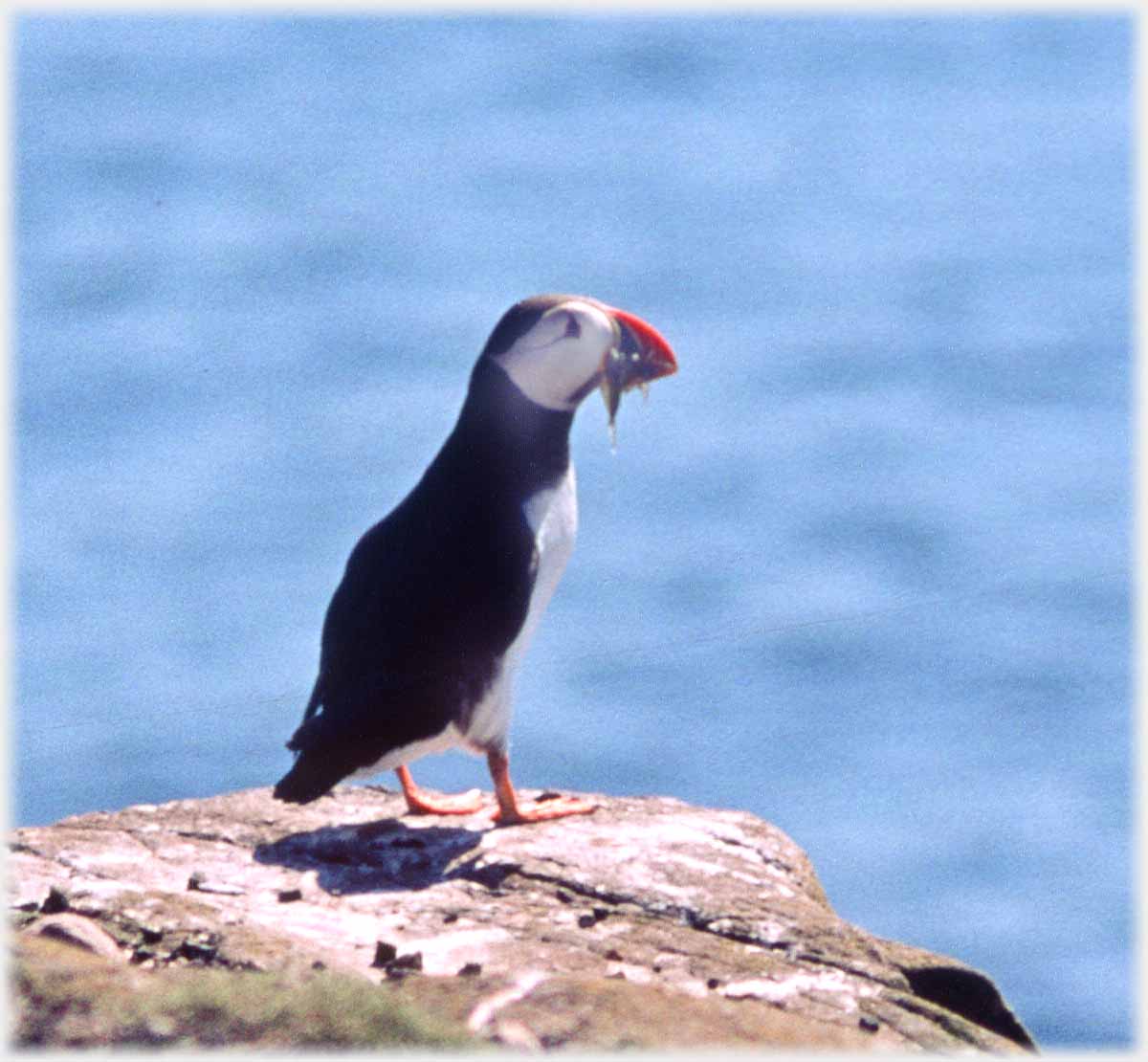 Puffins seem to repeatedly pose in this stance displaying their...
Puffins seem to repeatedly pose in this stance displaying their...
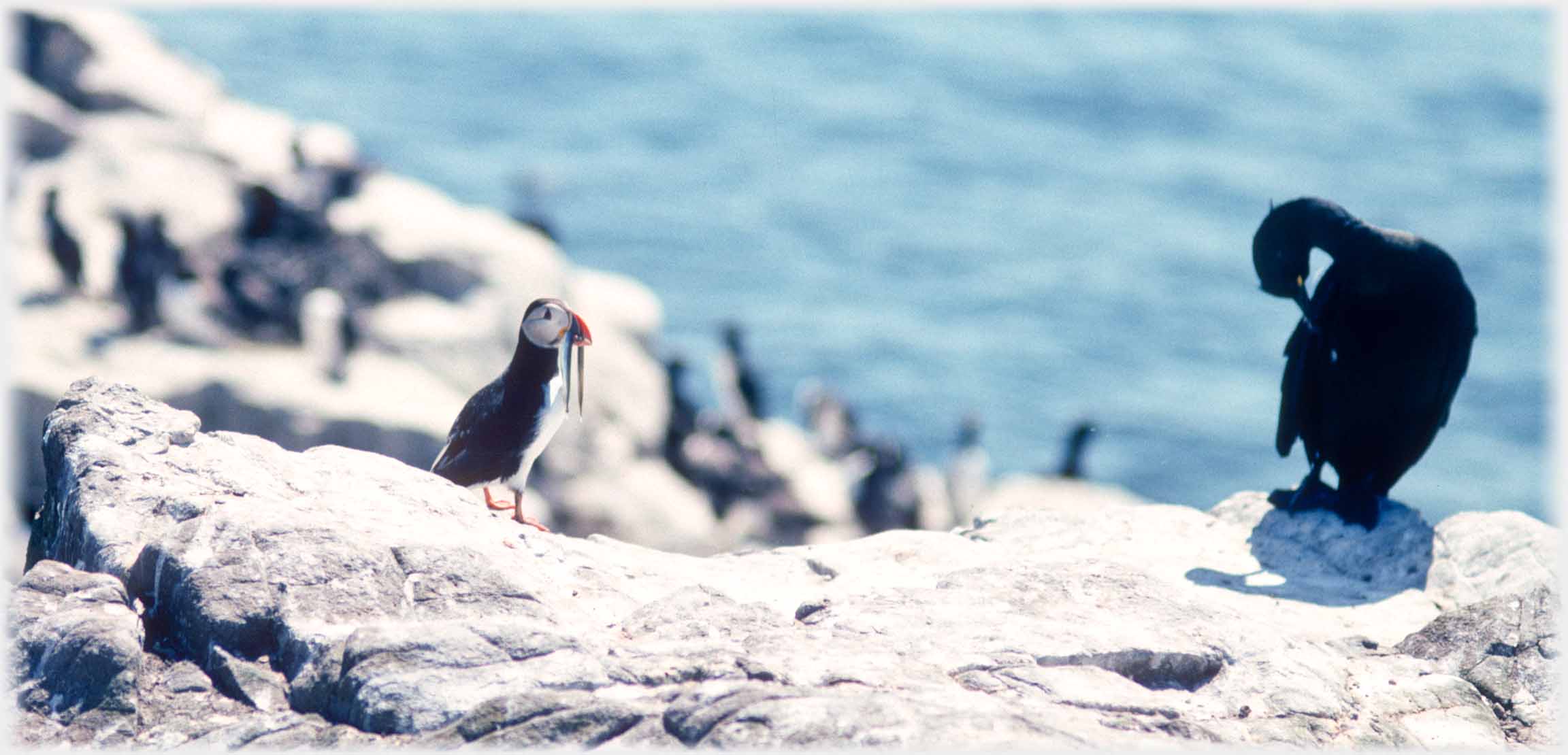 ...catches of sand-eels. The lack of which is part of the explanation for the decline of puffins in recent years
...catches of sand-eels. The lack of which is part of the explanation for the decline of puffins in recent years
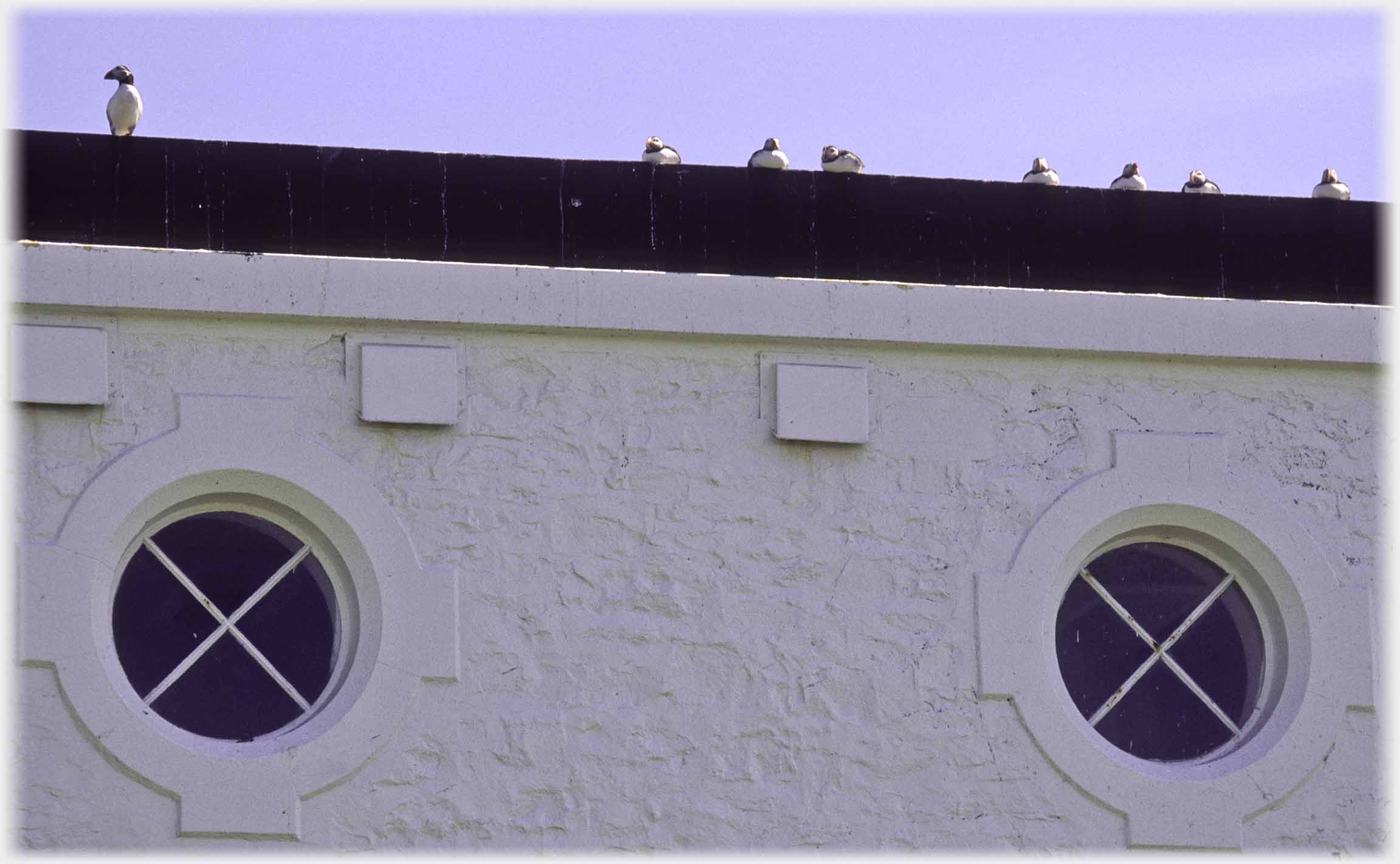 Puffins lining the eye brows of a two eyed building on Inner Farne
Puffins lining the eye brows of a two eyed building on Inner Farne
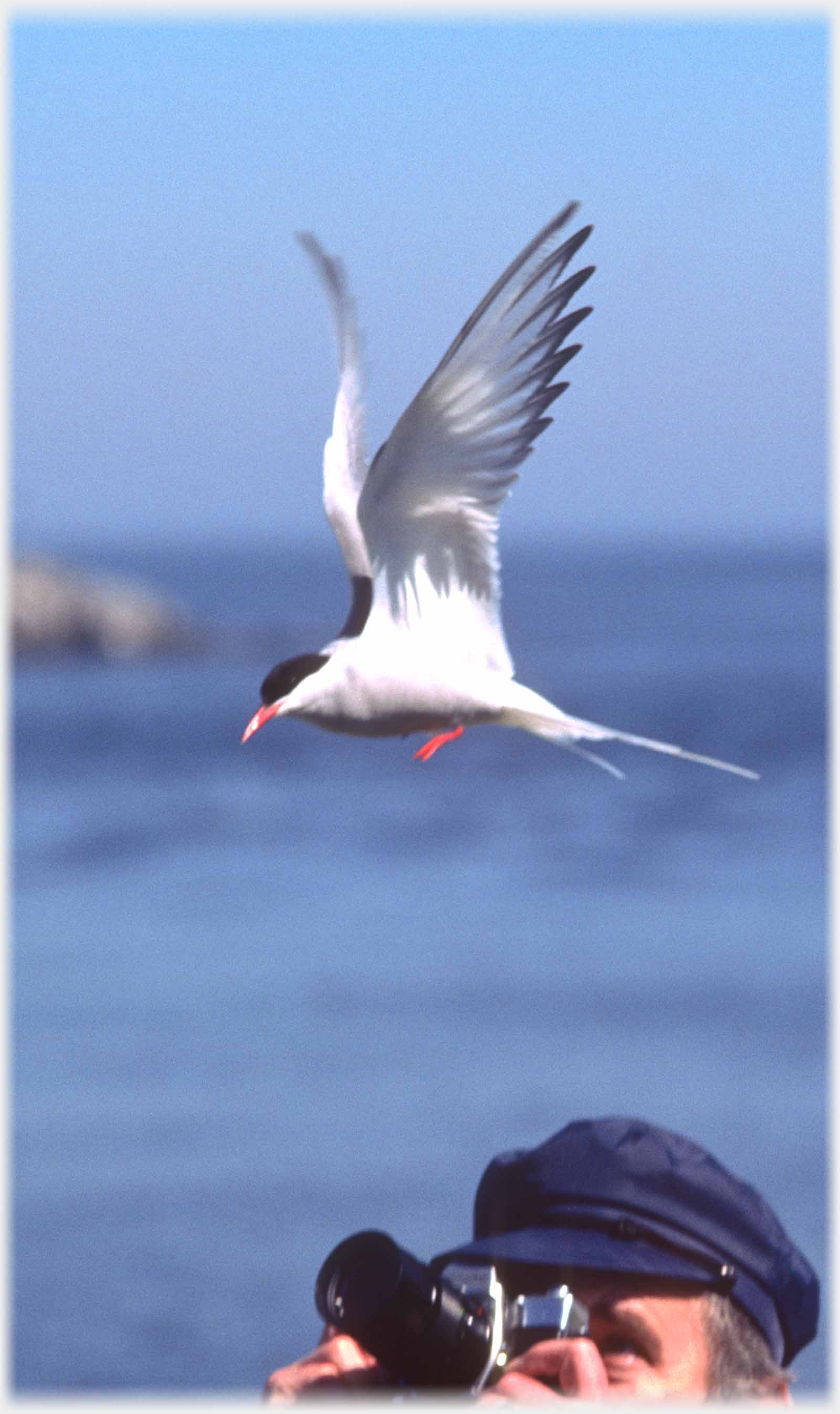 Distortions of a long focus lens. The photographer is far to the other side of the tern, but it is just as well that he also has a hat, for terns are extraordinarily effective in attacking heads!
Distortions of a long focus lens. The photographer is far to the other side of the tern, but it is just as well that he also has a hat, for terns are extraordinarily effective in attacking heads!
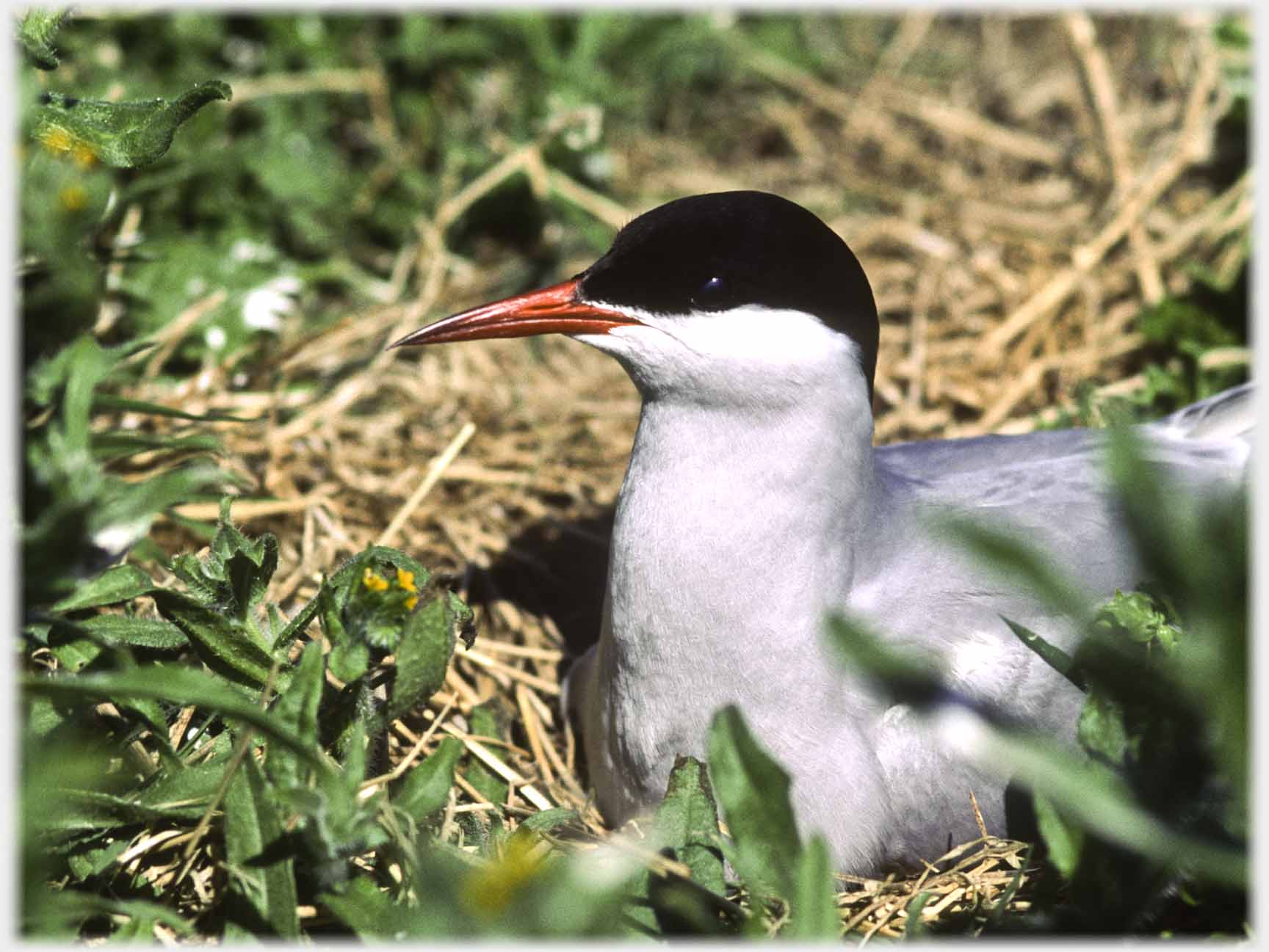 The closed beak of this nesting bird makes eases...
The closed beak of this nesting bird makes eases...
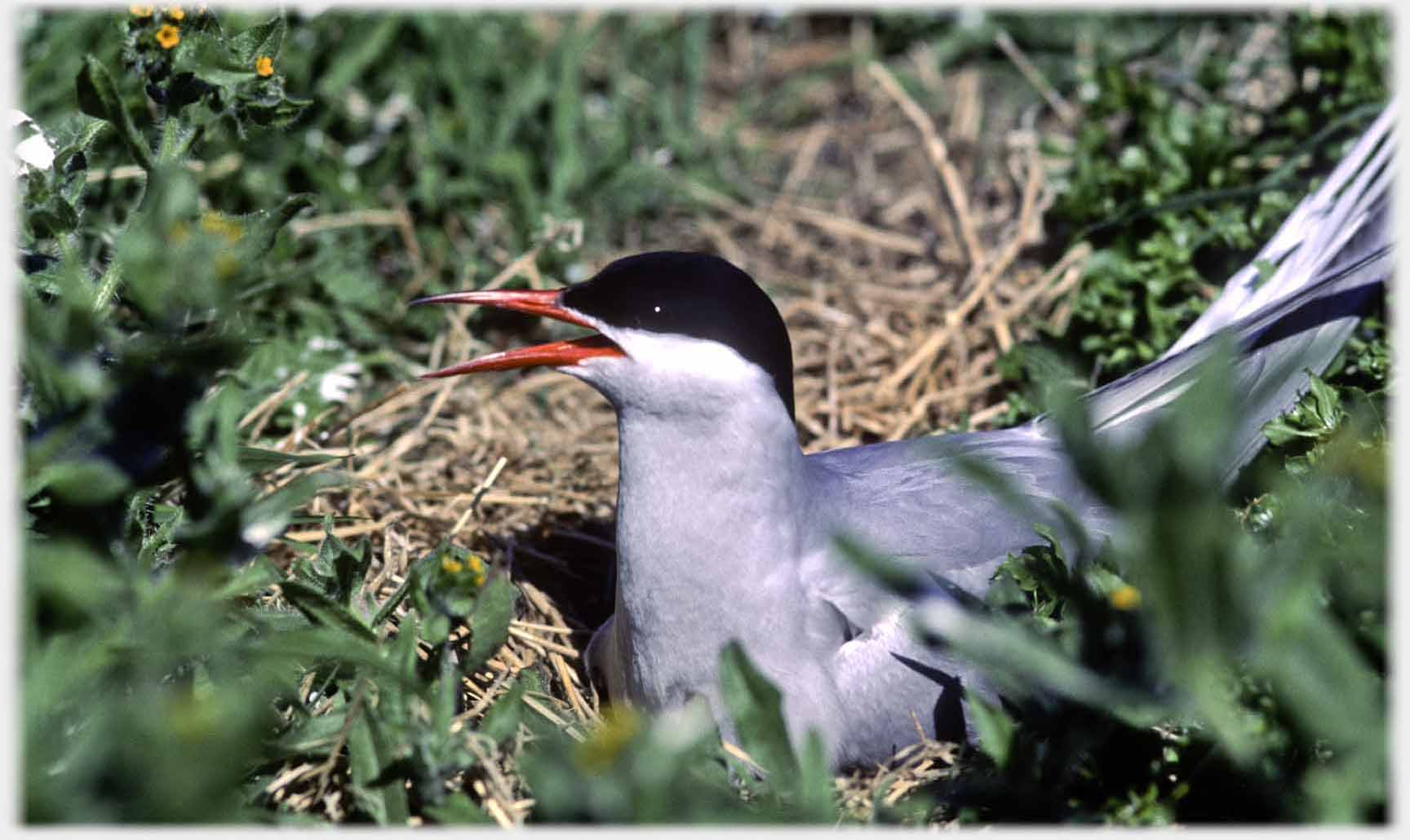 ...identification. More commonly the beak is vociferously open. Distinguishing this Arctic tern from the very similar common tern is not simple. The later has a black end to its beak, but here there is still a darker end which might mislead. The bleached white of the cheek provides confirmation that this is the Arctic species
...identification. More commonly the beak is vociferously open. Distinguishing this Arctic tern from the very similar common tern is not simple. The later has a black end to its beak, but here there is still a darker end which might mislead. The bleached white of the cheek provides confirmation that this is the Arctic species
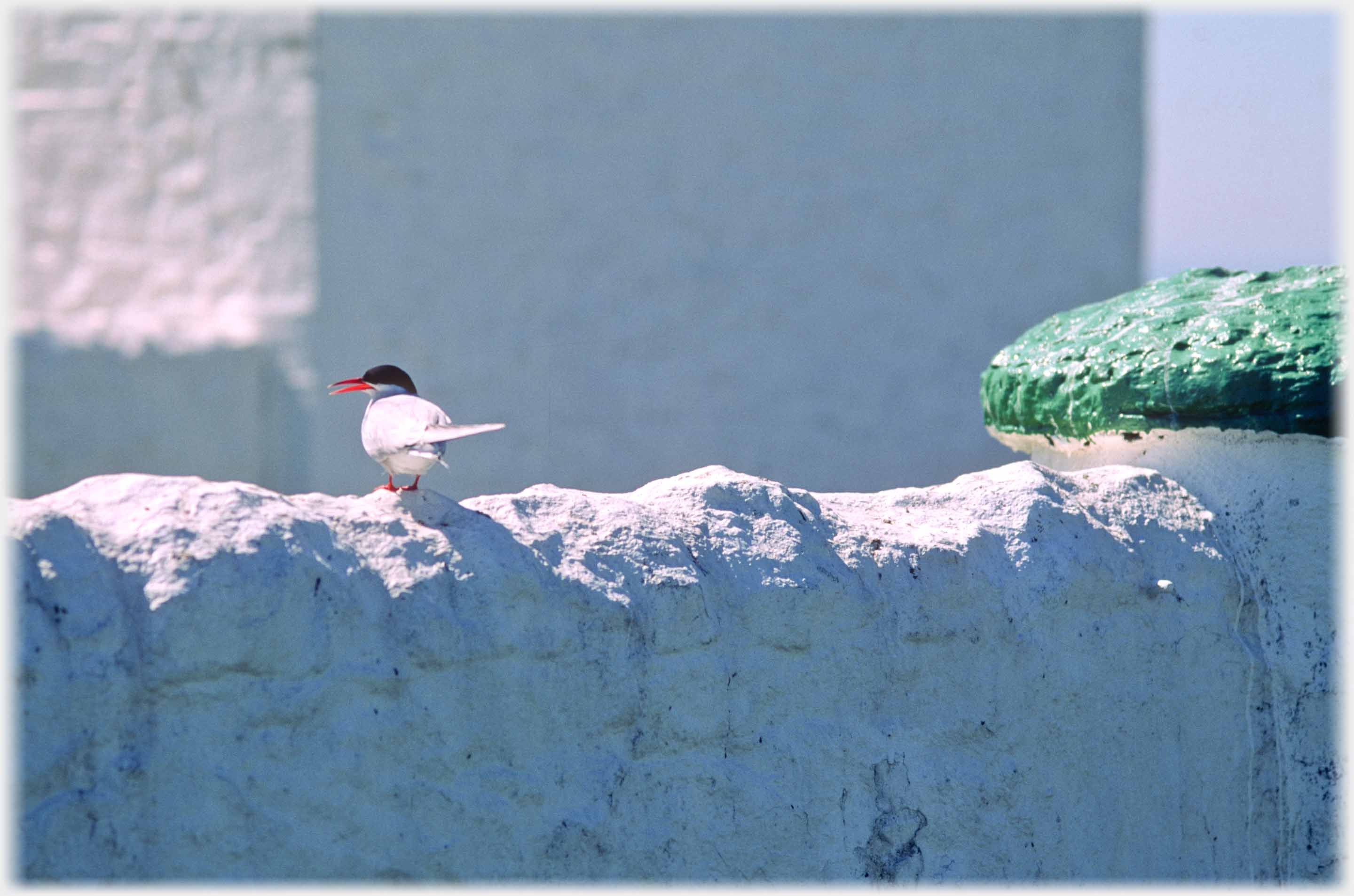 A tern taking part in a photographic composition
A tern taking part in a photographic composition
Trailers...
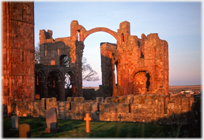 The next Picture Posting
page is to move a short distance north along the coast of Northumberland to Bamburgh Castle and the island of Lindisfarne.
The next Picture Posting
page is to move a short distance north along the coast of Northumberland to Bamburgh Castle and the island of Lindisfarne.
 The next page
of the Mosaic Section is headed 'Prescience'.
The next page
of the Mosaic Section is headed 'Prescience'.
Or go to the contents Go to the contents of the Mosaic Section. of the Mosaic Section.

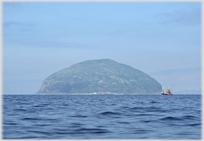 The last page also had bird cliffs - on Ailsa Craig
The last page also had bird cliffs - on Ailsa Craig
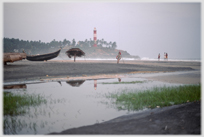 To some rather different shaped boats in Kerala - and not a bird in sight
To some rather different shaped boats in Kerala - and not a bird in sight
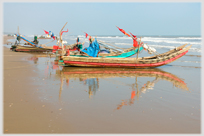 Some more boats on the beech in northern Vietnam
Some more boats on the beech in northern Vietnam
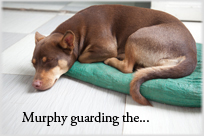 ...guide to this site
...guide to this site